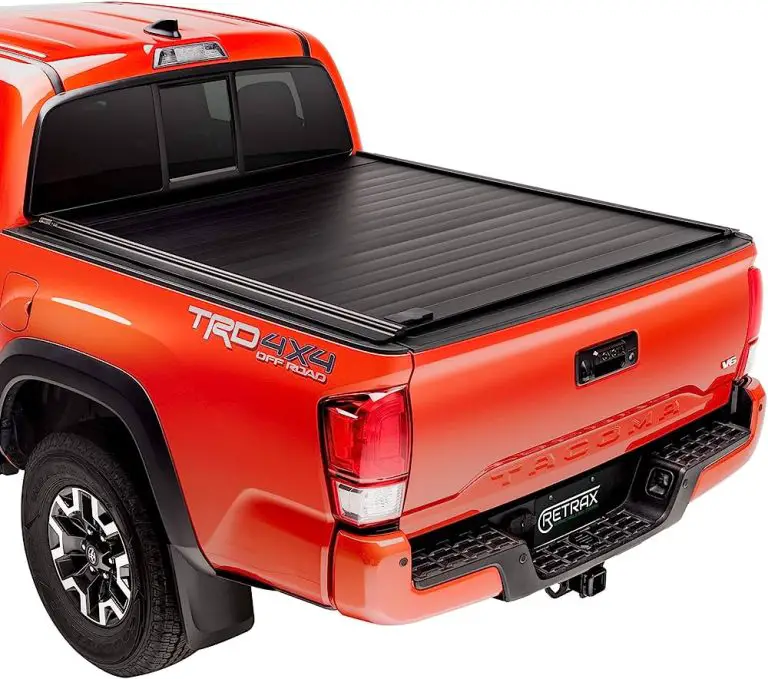How To Remove Rubbing Compound Haze? [Useful Tips]
Rubbing compound is a type of abrasive material that is commonly used to remove scratches, swirl marks, and other imperfections from car paint. While rubbing compound can be effective at restoring the finish of your car, it can also leave behind a hazy residue that can be difficult to remove. This haze can make your car look dull and unattractive, which is why it’s important to know how to remove it.
There are several methods that can be used to remove rubbing compound haze from car paint. The specific method that you choose will depend on the severity of the haze and the type of paint that is on your car. In general, it’s best to start with the least aggressive method and work your way up as needed.
If you’re dealing with rubbing compound haze on your car paint, don’t worry – there are steps you can take to restore the shine and clarity of your car’s finish. In this article, we’ll explore some of the most effective methods for removing rubbing compound haze from car paint.
What Causes Hazing After Application Of Rubbing Compound?
Hazing after the application of rubbing compound is a common problem that can occur due to a variety of reasons. Here are some of the most common causes of hazing:
- Using too much rubbing compound: Using too much rubbing compound can cause the compound to dry out and create a hazy residue on the paint.
- Applying rubbing compound in direct sunlight: When rubbing compound is applied in direct sunlight, it can dry out too quickly, leaving behind a hazy residue.
- Not wiping off the residue properly: If the residue from the rubbing compound is not wiped off properly, it can leave behind a hazy film on the paint.
- Using an aggressive rubbing compound: If an aggressive rubbing compound is used on a delicate or thin layer of paint, it can cause hazing and damage to the paint.
- Using an old or expired rubbing compound: If the rubbing compound has expired or is old, it may not work properly and can cause hazing.
How Do I Remove Rubbing Compound Haze?
Removing rubbing compound haze from your car’s paint can be done using several methods, depending on the severity of the haze. Here are some effective ways to remove the hazy residue left behind by rubbing compound:
Use a microfiber towel
One of the easiest ways to remove rubbing compound haze is to use a clean, dry microfiber towel to buff the surface of the paint. This can help to remove the haze and restore the shine of the paint.
Use a polishing compound
If the rubbing compound haze is more severe, you can use a polishing compound to remove it. Apply a small amount of polishing compound onto a foam applicator pad and work it into the hazy area using circular motions. Wipe off the excess with a microfiber towel.
Use a detailing spray
A detailing spray can also be effective in removing rubbing compound haze. Spray a small amount of the detailing spray onto the affected area and use a microfiber towel to buff the surface of the paint until the haze is removed.
Use a clay bar
If the rubbing compound haze is particularly stubborn, you can use a clay bar to remove it. Spray a lubricant onto the surface of the paint and gently rub the clay bar over the affected area. Wipe off any residue with a microfiber towel.
Why Is It Hard For Me To Buff Rubbing Compound Haze?
Buffing rubbing compound haze can be difficult for several reasons. Here are some possible reasons why you are finding it hard to buff rubbing compound haze:
Insufficient pressure
Rubbing compound haze can be stubborn and difficult to remove. If you are not applying enough pressure when buffing, it can take longer to remove the haze.
Wrong buffing pad
Using the wrong type of buffing pad can also make it harder to remove rubbing compound haze. A pad that is too soft may not have enough abrasive power to remove the haze, while a pad that is too aggressive can damage the paint.
Not letting the compound dry
Rubbing compound needs time to dry before it can be buffed. If you are buffing the compound before it has had time to dry, it can be harder to remove the haze.
Applying too much compound
Applying too much rubbing compound can also make it harder to remove the haze. Excess compound can dry out and create a hazy residue that is difficult to remove.
Incorrect buffing technique
If you are not using the correct buffing technique, such as working in small sections and using overlapping passes, it can be harder to remove the haze.
Can Rubbing Compound Damage My Car Paint?
Rubbing compound can damage your car’s paint if it is not used properly. Rubbing compound is an abrasive material that is designed to remove surface imperfections from the paint. It can remove swirl marks, light scratches, and water spots, but it can also cause damage if it is used incorrectly.
If you use too much pressure or use a coarse rubbing compound, it can remove more paint than necessary, leaving behind deep scratches and swirl marks. Rubbing compound can also damage the clear coat if it is applied too frequently or left on the paint for too long.
To prevent damage to your car’s paint, it is important to use rubbing compound carefully and according to the manufacturer’s instructions. Always use the least aggressive compound needed to achieve the desired results, and apply it with a clean, soft applicator pad. Work in small sections and buff the compound off before it dries. It is also important to wash and dry your car thoroughly before applying rubbing compound to prevent rubbing dirt and debris into the paint. If you are unsure about using rubbing compound, consult a professional auto detailer or body shop.
A DIY Method Of Removing Rubbing Compound Haze
- Wash the car: Begin by washing the car thoroughly to remove any dirt or debris on the surface.
- Inspect the car: Inspect the car for any remaining rubbing compound haze. If you find any, proceed to the next step.
- Prepare a solution: Mix equal parts water and white vinegar in a spray bottle.
- Spray the solution: Spray the solution on the affected area and let it sit for a few minutes.
- Wipe the area: Using a microfiber towel, wipe the area in a circular motion. Apply light pressure and continue wiping until the haze is removed.
- Repeat if necessary: If the haze is not completely removed, repeat the process.
- Rinse and dry: Rinse the area with water and dry it with a clean microfiber towel.
Why You Should Never Let Rubbing Compound Dry On Car Paint?
Rubbing compound should never be allowed to dry on car paint because it can cause damage to the paint surface. Rubbing compound is an abrasive material that is designed to remove surface imperfections from the paint, but when it is left on the paint surface for too long, it can actually create new imperfections.
When rubbing compound dries on the paint surface, it can become more difficult to remove and may require more aggressive techniques that can damage the paint. Additionally, if the compound is left on the paint for too long, it can break down the clear coat and even penetrate the paint layer, causing permanent damage.
To prevent damage to your car’s paint, it is important to work in small sections and buff the rubbing compound off before it dries. Always follow the manufacturer’s instructions for application and removal, and do not apply more than necessary. If you are unsure about using rubbing compound or have any concerns about damaging your car’s paint, it is best to seek the help of a professional auto detailer or body shop.
How To Apply Rubbing Compound?
Prepare the surface
Make sure the surface to be treated is clean and dry before applying the rubbing compound. Use a pre-wax cleaner or clay bar to remove any dirt, debris, or contaminants.
Apply a small amount of rubbing compound
Apply a small amount of rubbing compound to a foam or microfiber applicator pad. Do not apply too much as this can cause swirl marks or scratches.
Work in small sections
Work in small sections, about two feet by two feet. Apply the rubbing compound to the surface in a circular motion with light to medium pressure. Avoid working on dry paint as this can cause more damage.
Buff the surface
After applying the rubbing compound, use a clean microfiber towel to buff the surface in a back-and-forth motion until the compound is fully removed. Make sure to buff the surface until it is smooth and shiny.
Repeat if necessary
If there are still imperfections or scratches, repeat the process until the desired results are achieved.
Clean the surface
After using the rubbing compound, make sure to clean the surface with soap and water to remove any remaining compound residue.
It is important to note that using rubbing compound can be a tricky process, and if you are unsure about using it or have any concerns about damaging your car’s paint, it is best to seek the help of a professional auto detailer or body shop.






